Published 27 AUG 2024
Christoph Schlingensief
Deutschlandsuche (Searching for Germany)
Opening – 13 SEP 2024, 6-10 pm
12 SEP till 9 NOV 2024
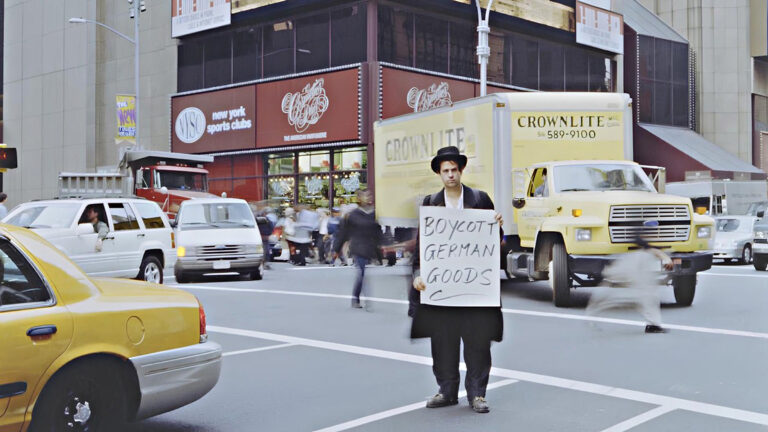
Christoph Schlingensief
Deutschlandsuche, 1999
Courtesy Galerie Crone, Berlin, Wien and estate Christoph Schlingensief, Berlin
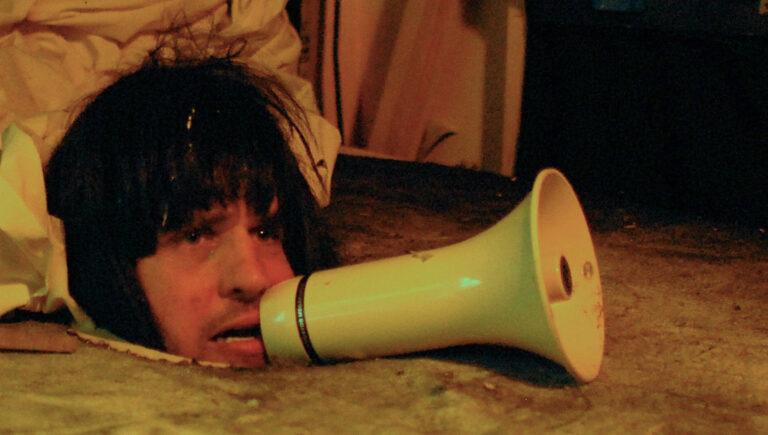
Christoph Schlingensief
AREA 7 – Eine Matthäusexpedition, Burgtheater Wien, 2006
Foto Georg Soulek, Wien
Courtesy Galerie Crone, Berlin, Wien
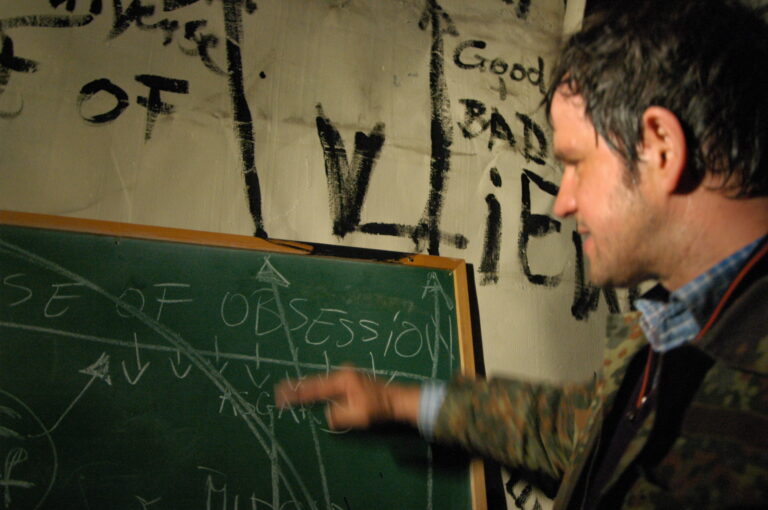
Christoph Schlingensief
Animatograph, Island Edition, Reykjavik, 2005
Foto Aino Laberenz, Berlin
Courtesy Galerie Crone, Berlin, Wien and estate Christoph Schlingensief, Berlin
Christoph Schlingensief (*1960 in Oberhausen, † 2010 in Berlin) did not conceive of his work in terms of traditional genres, but rather merged film, theater, literature, performance, television, time-based media, visual arts, and political activism. For him, there were neither formal nor conceptual boundaries. Originally coming from film, he made use of all disciplines without the slightest fear of contact.
Consistent characteristics of Schlingensief’s works were a clear, striking language, the fascination with trash and the mainstream, whose mechanisms he exploited with relish, and an ethical and moral concern that always underpinned his radical actions. The seriousness with which he questioned everyday life in Germany in the face of an insufficiently processed history went hand in hand with a humorous view of himself and others. His artistic practice was pervaded by a loud, challenging outcry that was not intended to scare, but to arouse and unite.
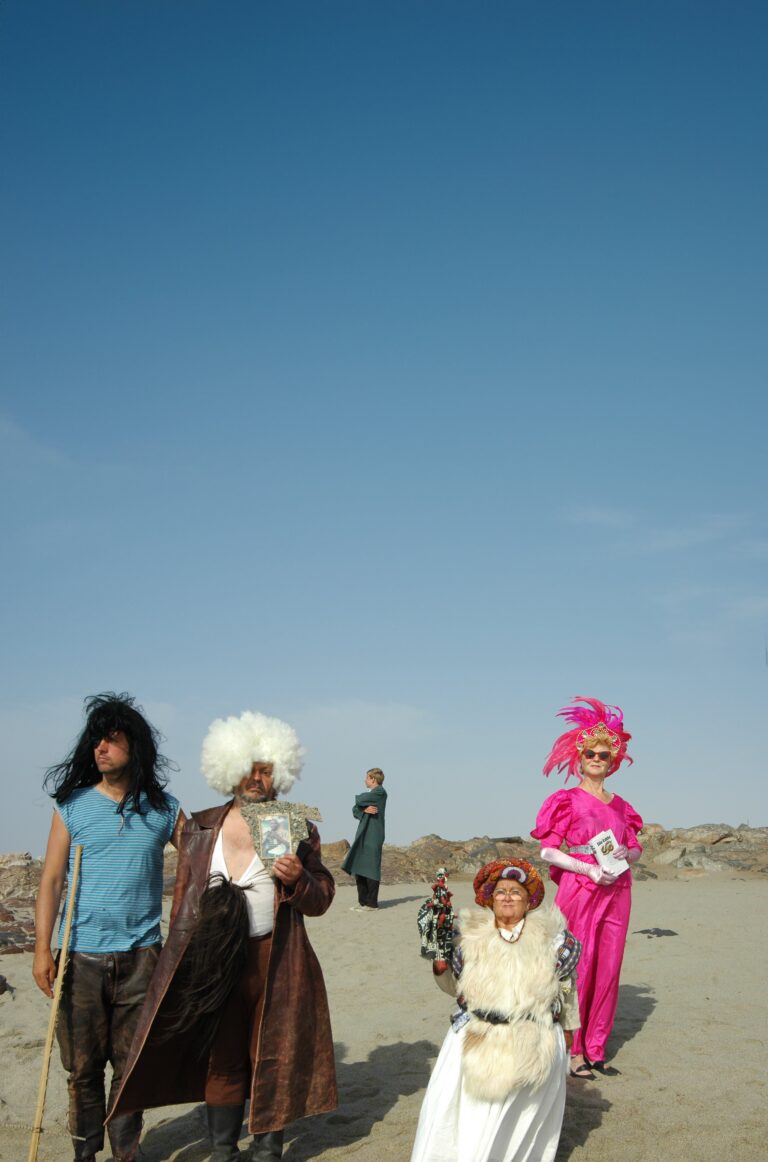
Christoph Schlingensief
Deutschlandsuche, Namibia, 2004
Foto: Aino Laberenz
Courtesy Galerie Crone, Berlin, Wien und Nachlass Christoph Schlingensief, Berlin
Schlingensief put his finger in the wound in order to heal. He was not interested in “bubbles” or inner circles, but claimed the big picture for himself. He did not seek confrontation with the “enemy” in order to marginalize or even eliminate them, but to win them over. His work and his art aimed at a “coexistence of the good.” He replaced ideology with a radical way of thinking that demanded contradictions and a mutual debate.
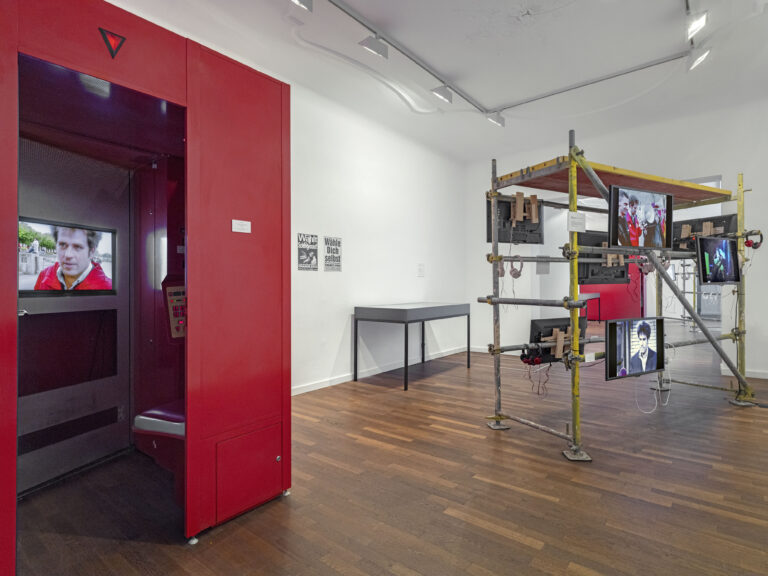
Courtesy Galerie Crone, Berlin, Wien.
Photo Uwe Walter.
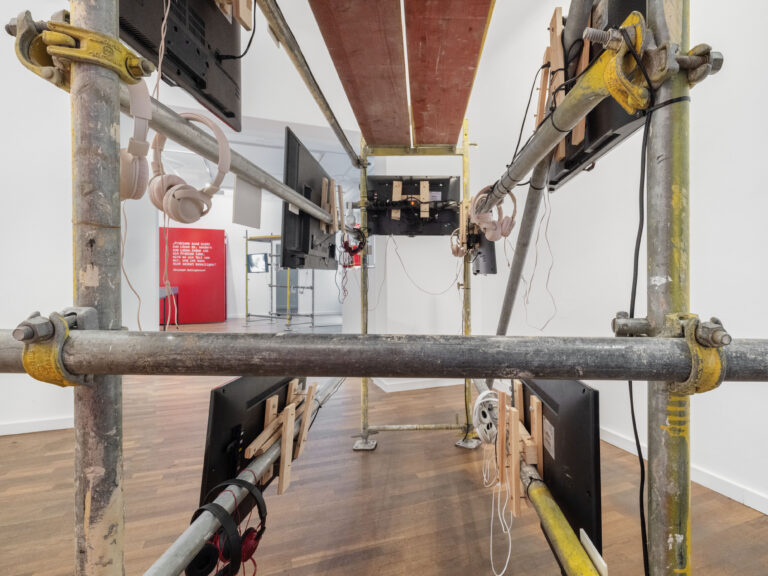
Courtesy Galerie Crone, Berlin, Wien.
Photo Uwe Walter.
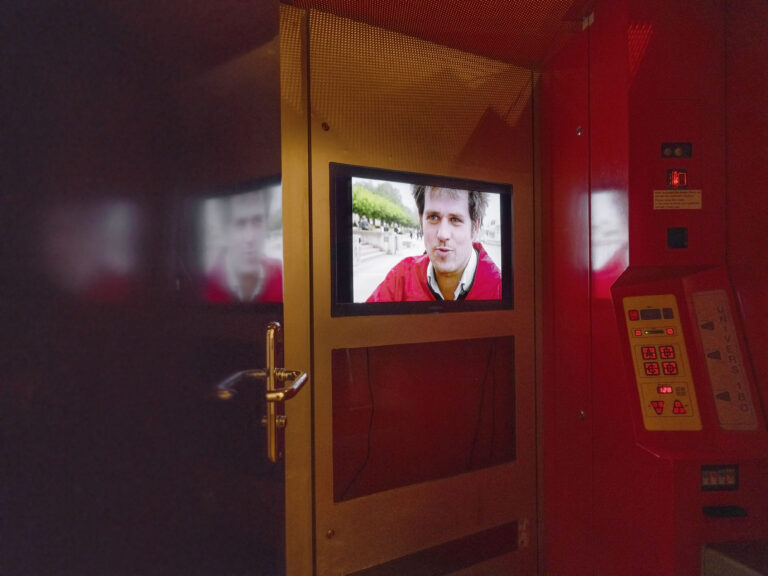
Courtesy Galerie Crone, Berlin, Wien.
Photo Uwe Walter.
In the exhibition Christoph Schlingensief | Deutschlandsuche (Searching for Germany), three of his major works are shown that enable a comparison with today’s politically motivated activist art. How do his approach, his aspirations, and his concerns differ from the diverse current intermedia, cross-genre art practices, which are undeniably in Schlingensief’s tradition, but—according to criticism and perception—often only seek self-assurance, self-affirmation, and self-referentiality?
In these polarizing times, it is particularly worth taking a look at Schlingensief’s work. It is often said that someone like him is missing today. But how would his art perform in the current bombardment of constant provocations, permanent truth-stretching exercises, and ongoing social divisions? One of his credos was: “Shout into the silence.” Would he say today: “Shout into the noise”? How would he make his fundamental concern for cohesion and togetherness be heard? Is it possible to come up with an answer? Unpredictability was also part of Schlingensief’s work, who was often so far ahead of his time.
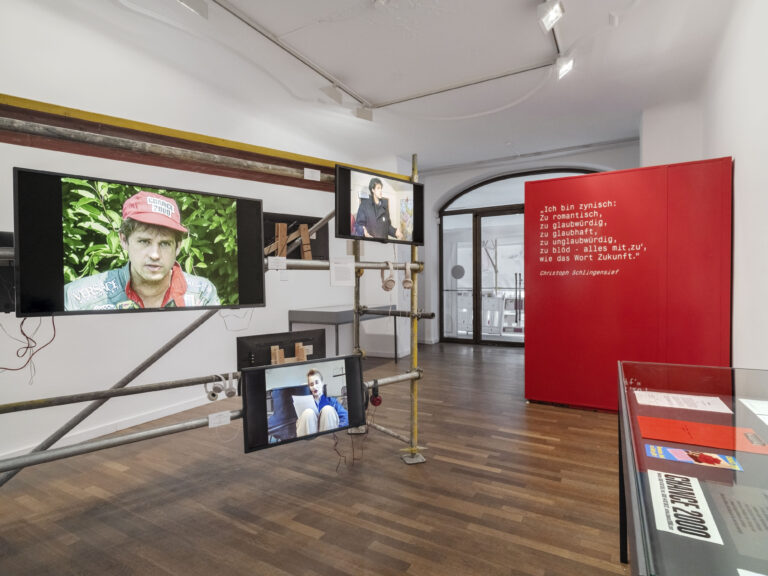
Courtesy Galerie Crone, Berlin, Wien.
Photo Uwe Walter.
The Schlingensief exhibition at Crone, his first solo show in Berlin in ten years, is intended to help contextualize his work against the backdrop of current events. It is curated by Anna-Catharina Gebbers, who, together with Klaus Biesenbach and Susanne Pfeffer, was jointly responsible for the major Schlingensief retrospectives at KW in Berlin in 2013 and at MoMA PS1 in New York in 2014, and is being realized in close collaboration with Aino Laberenz, who manages and preserves Schlingensief’s estate.
